Yesterday morning found me carrying out a mildly tedious annual piece of admin (the collection of certificates proving a clean criminal record required amongst other bumpf for a guide’s pass at the Vatican Museums) on the site of what was once the largest plague hospital in Europe.
Beyond the Vatican, at the foot of the Monte Mario, is the architecturally banal ad hoc jumble of buildings that make up Rome’s court system. From undistinguished examples of 1950s brutalism to the plasticky leisure centre post-PoMo of the early 2000s it is a spectacularly unlovely sprawl. In the 1980s the courts of Rome were first referred to by journalists as il porto delle nebbie from the title of the novel “Le Port des brummes” by Simenon. In the novel Maigret’s thwarted attempts to cut through the secrecy of a Normandy port to solve a murder are mirrored by the oppressive thick fog of the title. In English it’s called “The Misty Harbour”, which I don’t think conveys the air of menace at all. The description was coined in reference to the turbid, murkily Byzantine, nature of Rome’s legal system. It might equally be applied to the very literal negotiation of the buildings where the innumerable cogs of that system grind.

Yesterday, then, I went once again to this antithesis of town planning to collect the certificates which are among the various requirements for my annual accreditation as a qualified guide authorised by the Vatican Museums. The certificates are booked on one impenetrable website, the appointment to pick them up on completely another for which the link is a sort of Holy Grail. A hermetic system if ever there was one. Having navigated clunky sites with a distinct whiff of 1997 (despite this year’s booking system being new) I showed up for the reassuringly specific appointment time of 12:14.
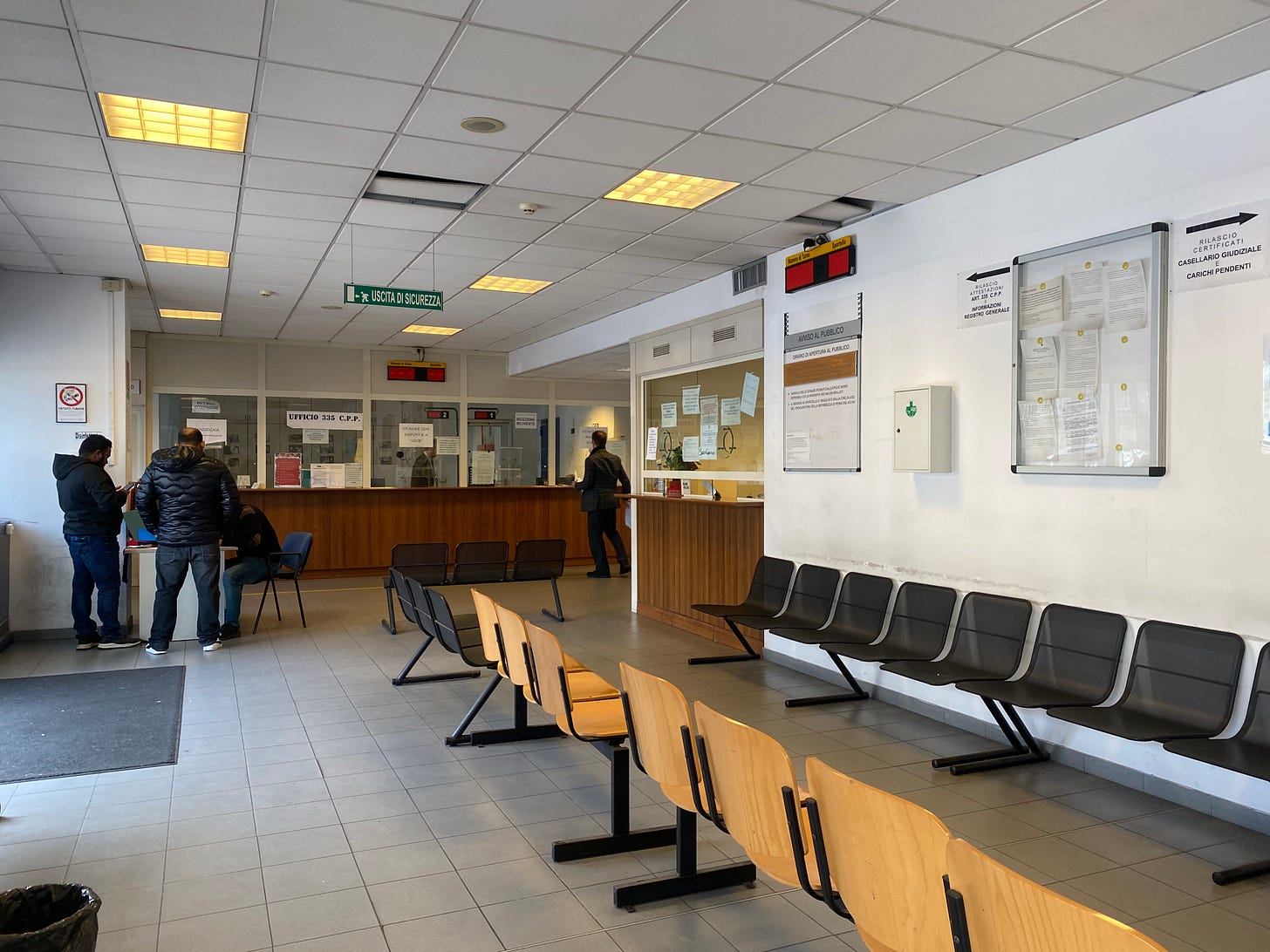
I convinced the policeman at the gate to let me in, paid for revenue stamps (€39.85 for both certificates, cash only), showed my ID and booking number to the lady at the desk and received my certificates. The booking system may have been a Crystal Maze style challenge—Byzantium without the mosaics—but I was in and out in ten minutes. A marked improvement on the old show-up-and-wait-your-turn system.

Back before Covid spurred those public offices in Italy which had continued to resist the adoption of online booking systems, these queues were the stuff of legend. You just took a number and waited. I would add a frisson of excitement to the interminable process by seeing how many people were dealt with in, say, a quarter of an hour, and factoring in variables to calculate how long I could safely leave my post without overshooting my number. Going and doing something more fun and, crucially, returning in time is the most satisfyingly entertaining way to deal with such a queue.
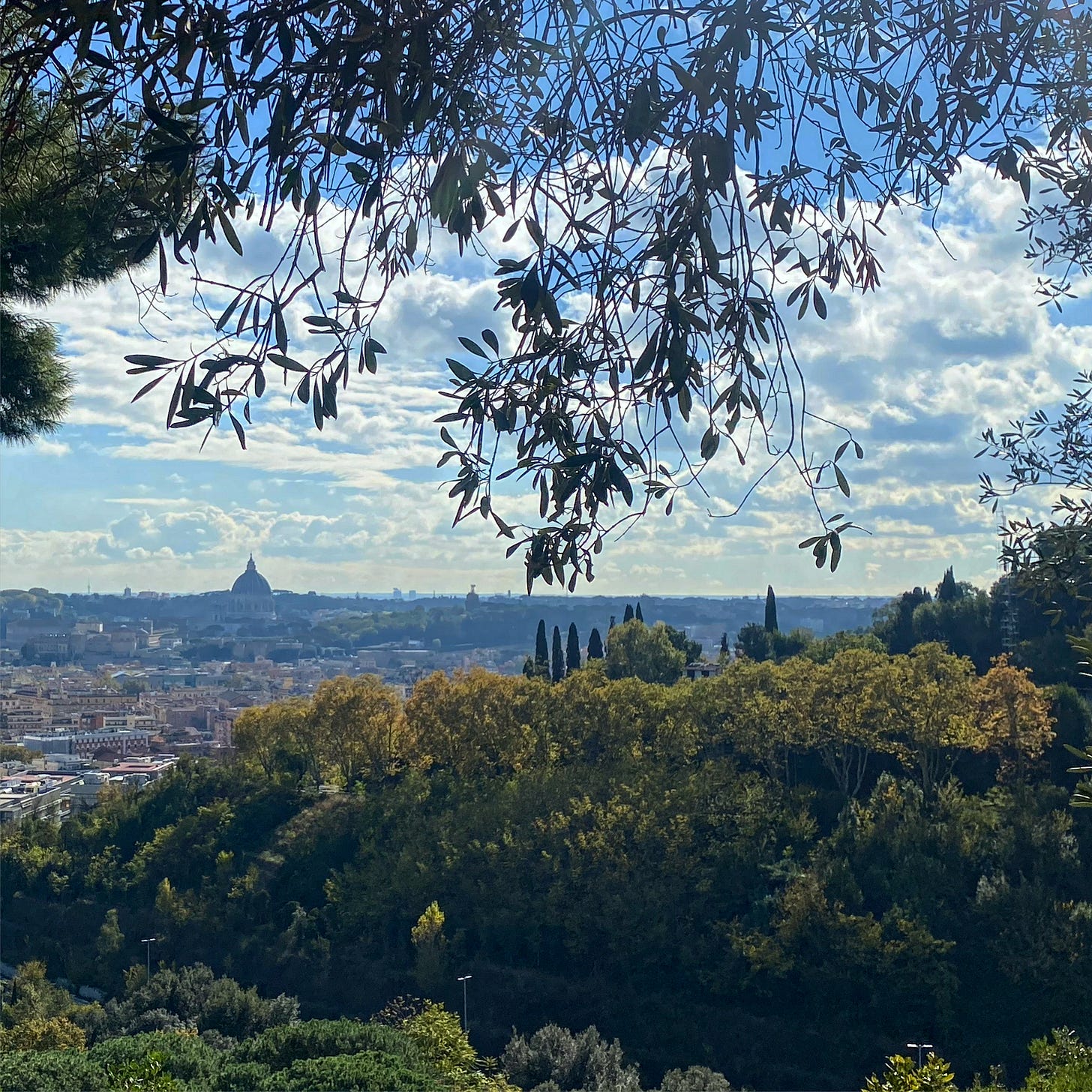
So it was that some years ago, testing my system, I hopped on my scooter and explored the neighbouring area. I zoomed up to the Monte Mario, where the final stretch of the via Francigena enters the city. The hill is named for its dedication to the Virgin, and was also referred to as the Mons Gaudii (the hill of joy) because of the elation felt by pilgrims finally seeing the end of their long arduous journey in sight. It is a serendipitous bit of geography and no marketing expert could come up with a more spectacular first glimpse of the city.
Sweeping views open up towards the Vatican presenting medieval pilgrims with a view across to the higgledy piggledy Vatican complex, out on a limb from the main part of the city. From the late sixteenth century pilgrims were rewarded with the vast dome of St Peter’s; an even grander beacon above the tomb of Peter. Many of those that made it to the Mons Gaudii wouldn’t make it much further; pilgrims were often in terribly poor health after their long journeys and at the bottom of the hill, lurking just beyond the bounds of the dystopian Port des brummes, is the clue that Rome’s legal system now operates on what was once a vast plague hospital.
The medieval church, San Lazzaro dei Lebbrosi, St Lazarus of the Leprous occupies a charming residential street, overflowing with pots of greenery outside every door. Pathological definitions were pretty loose in the Middle Ages, “leprosy” could mean pretty much anything contagious. From St Lazarus, patron of lepers, hospitals to contain (rather than treat) outbreaks of plague and other epidemics were called lazzaretti. Countless pilgrims made it no further than here and died, after unimaginably long and difficult journeys, in the largest lazaretto in Europe, within a stone’s throw of their objective.
And though it sounds gloomy, on a bright November morning I can assure you it wasn’t, and that was what I was thinking about as I queued for photocopies having picked up my certificates. Tedious admin completed I dropped in on the borgo of St Lazarus and then scootered up the hill to admire the autumnal view towards St Peter’s from the Monte Mario, looming above the porto delle nebbie.




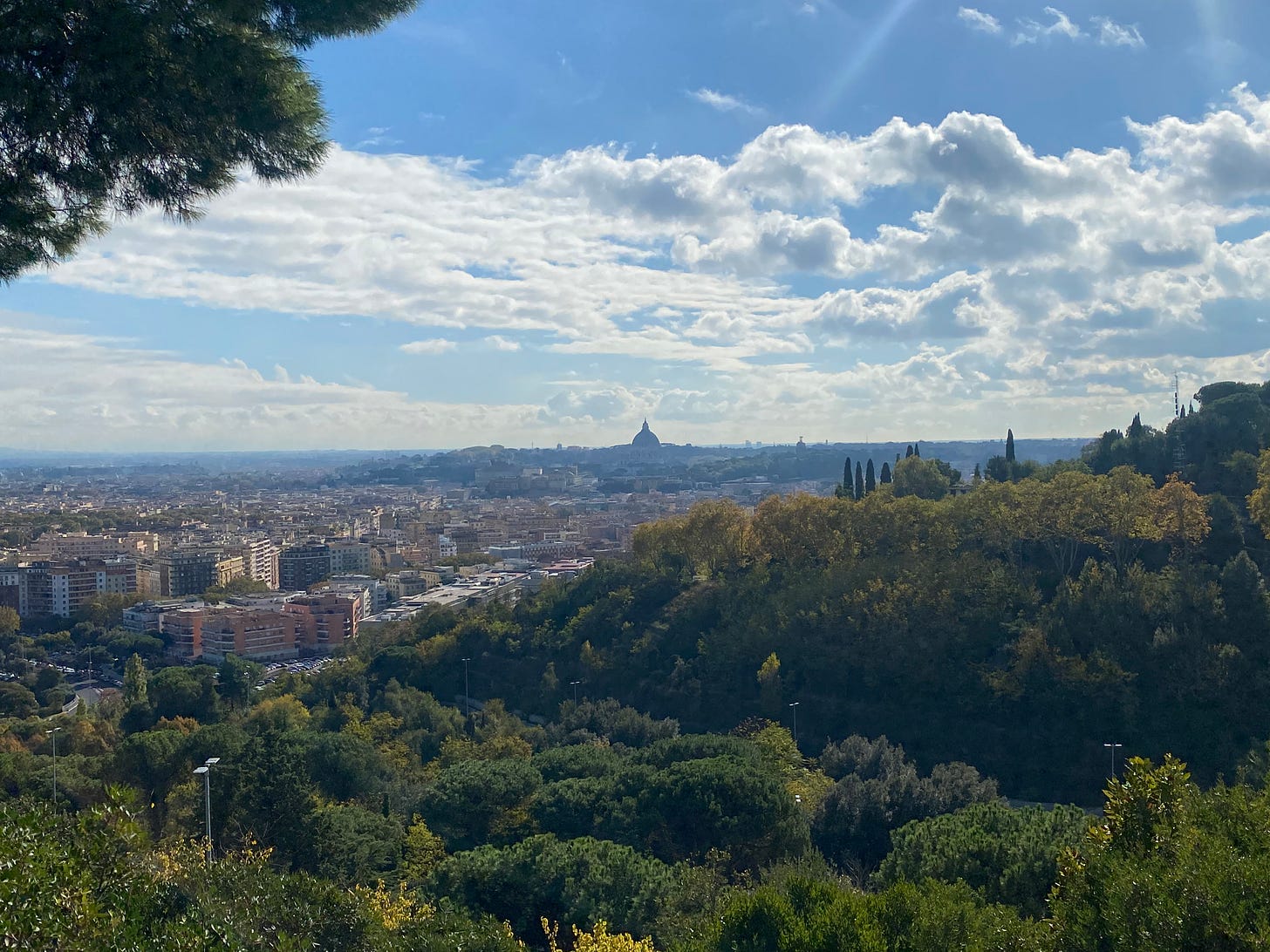
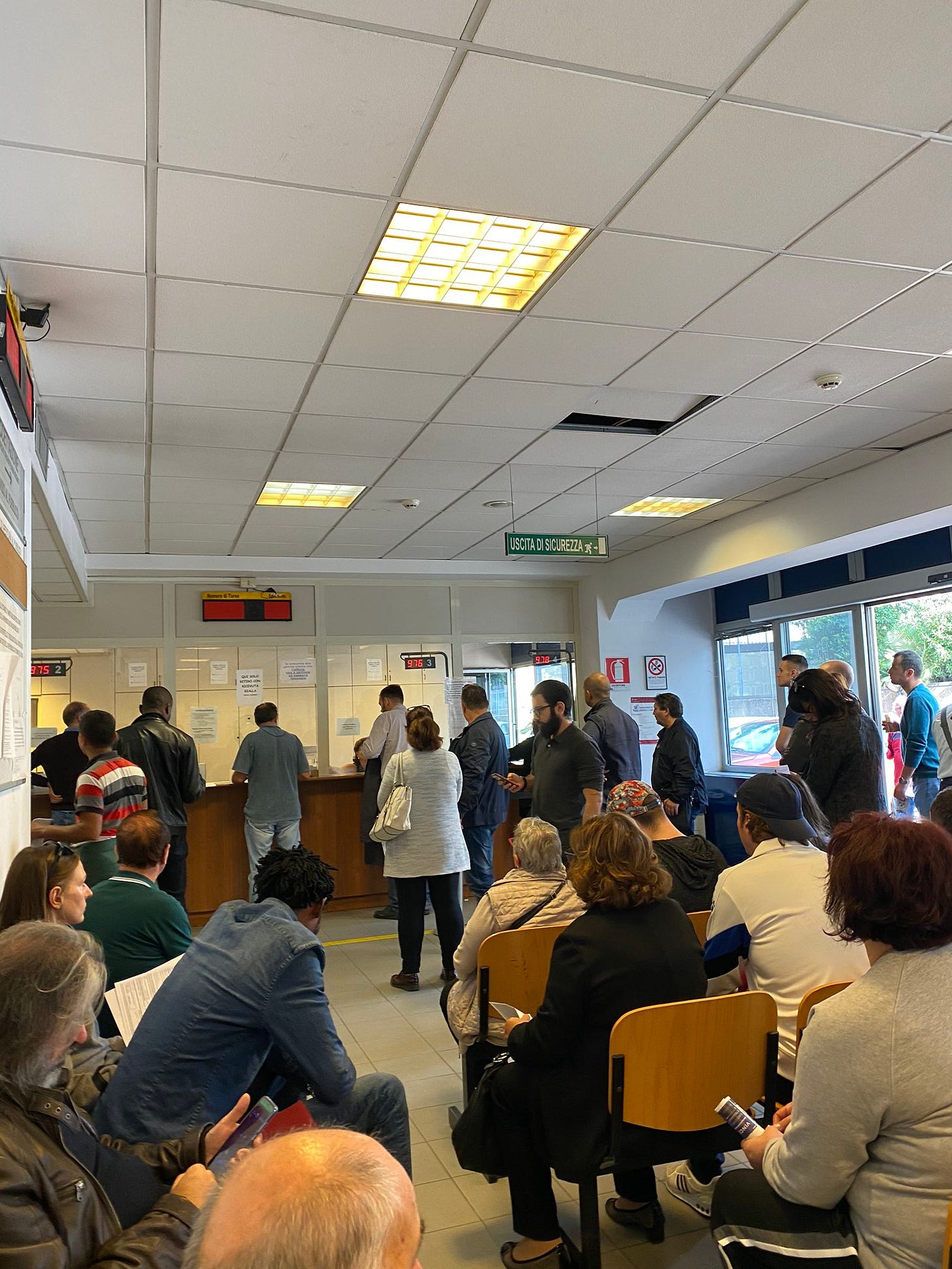

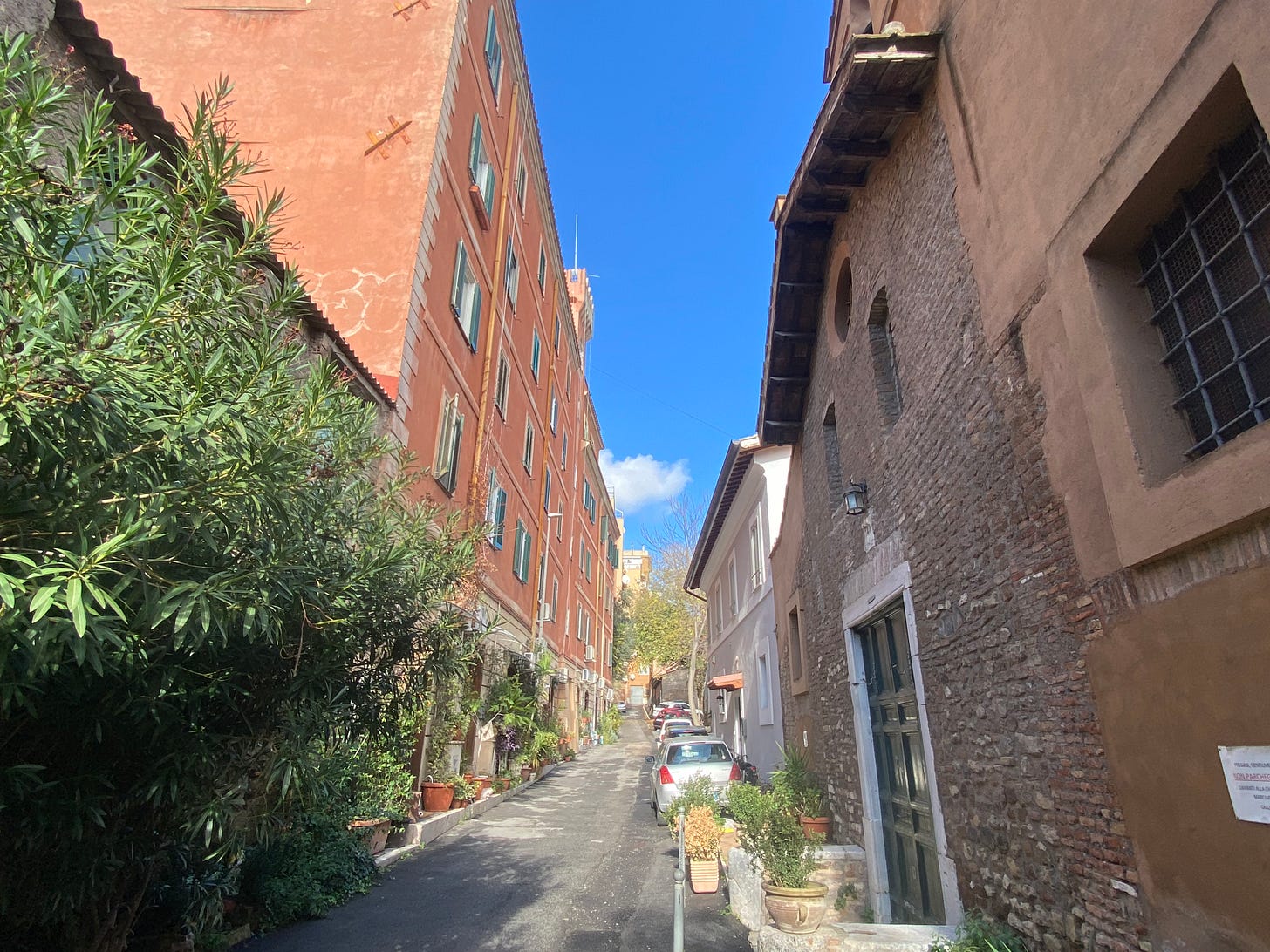
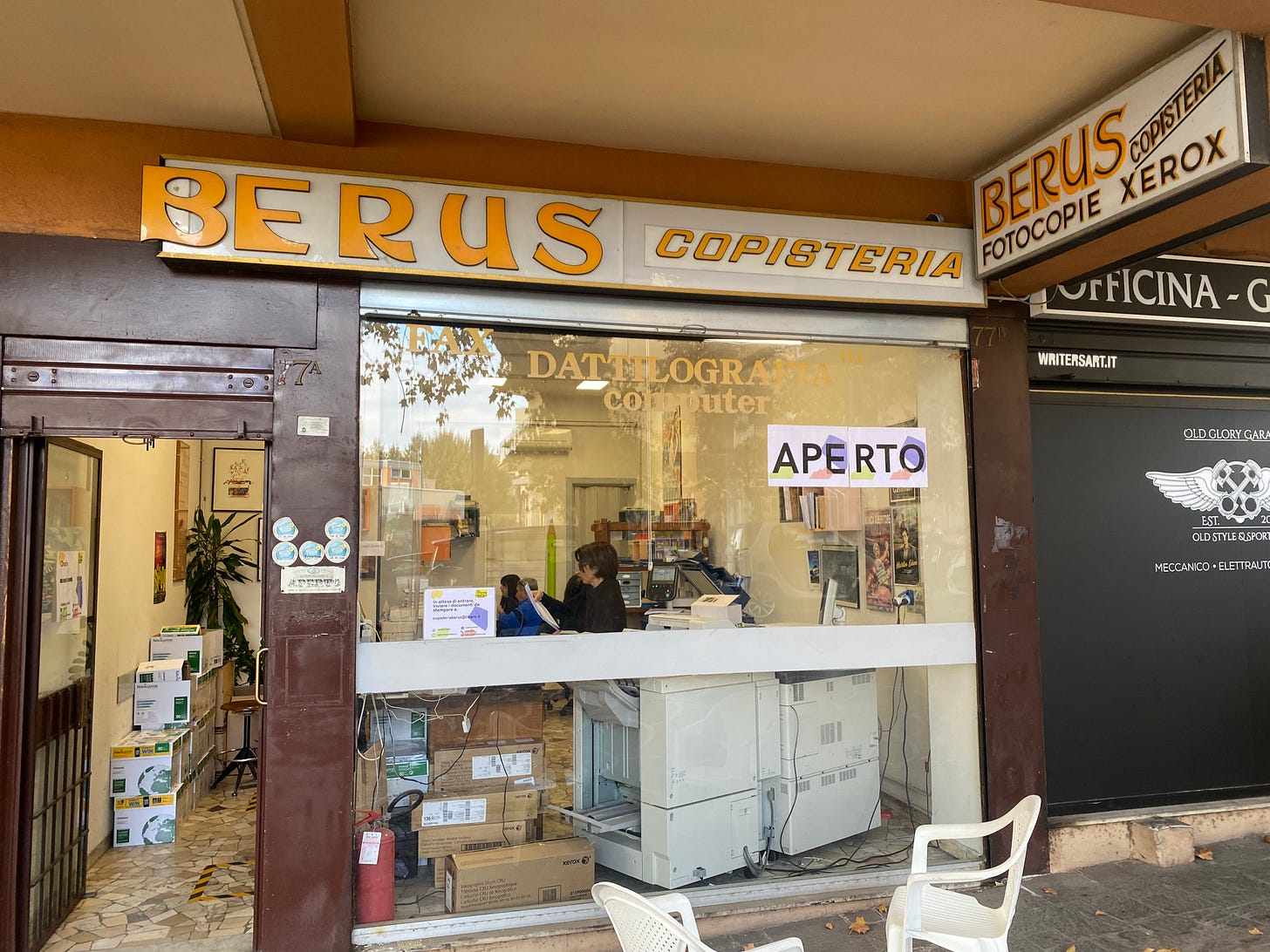

Your story of the queue for the certificates reminded me so much of the Illinois department of motor vehicles. A person could/would queue there for hours. It too, was the stuff of legends/nightmares. Under the new governor (and with some help from everyone being home due to Covid) the system was overhauled. In the last year it has never taken me more than 15 minutes to complete even the most complex of transactions (transferring the title to a vehicle) and often it is even shorter than that. It was quite novel the first few times... Sadly, there is no adjacent tasty pizza.
😅 It used to be the same here in Melbourne at the Italian Consulate. Until recently, renewing our passports was always such a stomach-churning ordeal. Queues long waiting times and officious functionaries! Anyway, all improved now with an online appointment booking system and minimal contact 😅